Detailed description, starting function
|
|
Detailed description, starting function
|
Glow duration control comprises four sub-functions:
|
-
|
Starting preparation glow
|
Depending on the temperature of the engine coolant, preheating starts when the ignition is turned to ON. At the same time, information that preheating is active is sent on the P-bus and read by the main instrument unit. This turns on the preheating indicator lamp. Preheating depends on the temperature of the engine coolant, see table.
|
Temperature °C (°F)
|
Duration
|
|
+5 (+41,0)
|
inactive
|
|
-10 (+14,0)
|
10 seconds
|
|
-20 (-4,0)
|
15 seconds
|
If the engine speed exceeds 42 rpm before the time expires, preheating will be deactivated.
|
Starting preparation glow
|
Starting preparation heating starts after preheating if the following conditions are met:
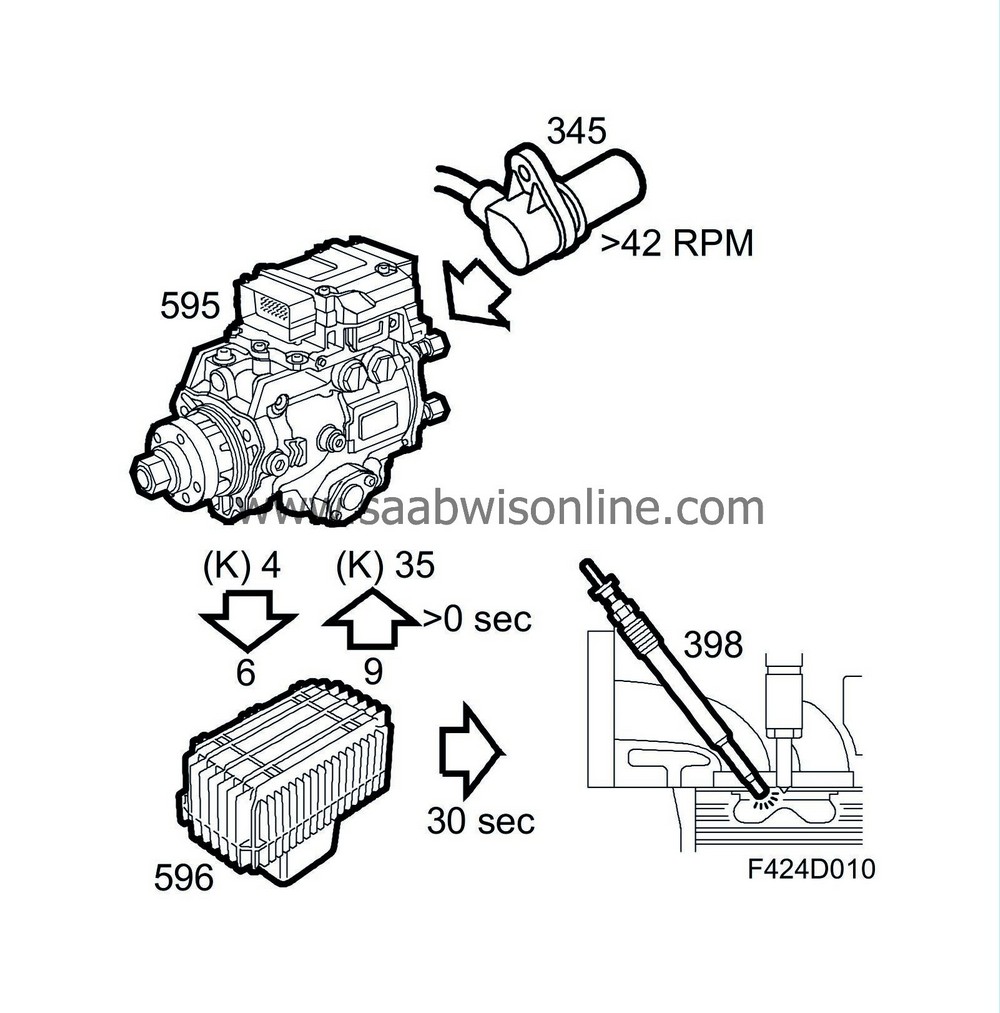
|
-
|
Preheating duration longer than 0 seconds
|
|
-
|
Preheating time has expired
|
Starting preparation heating is shut off when the engine speed exceeds 42 rpm or after 30 seconds.
Starting glow takes place each time the engine is started (over 42 rpm) if the engine coolant temperature is lower than 25°C (77°F). The function is deactivated if any of the following parameters are fulfilled:
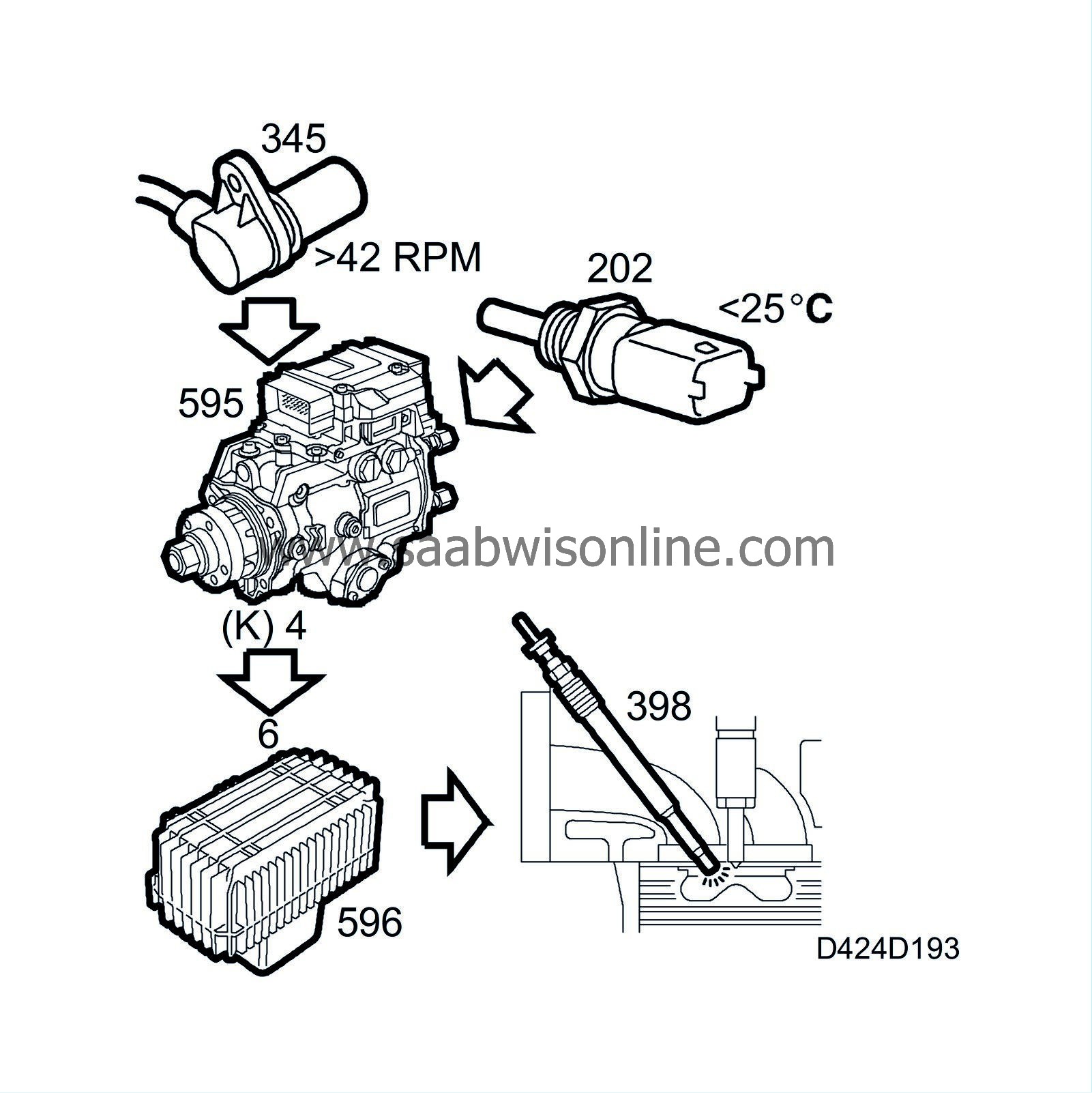
|
-
|
Starting glow duration of 2 minutes has expired
|
|
-
|
Engine coolant temperature rises above 25°C (77°F)
|
|
-
|
Engine speed exceeds 750 rpm (engine running)
|
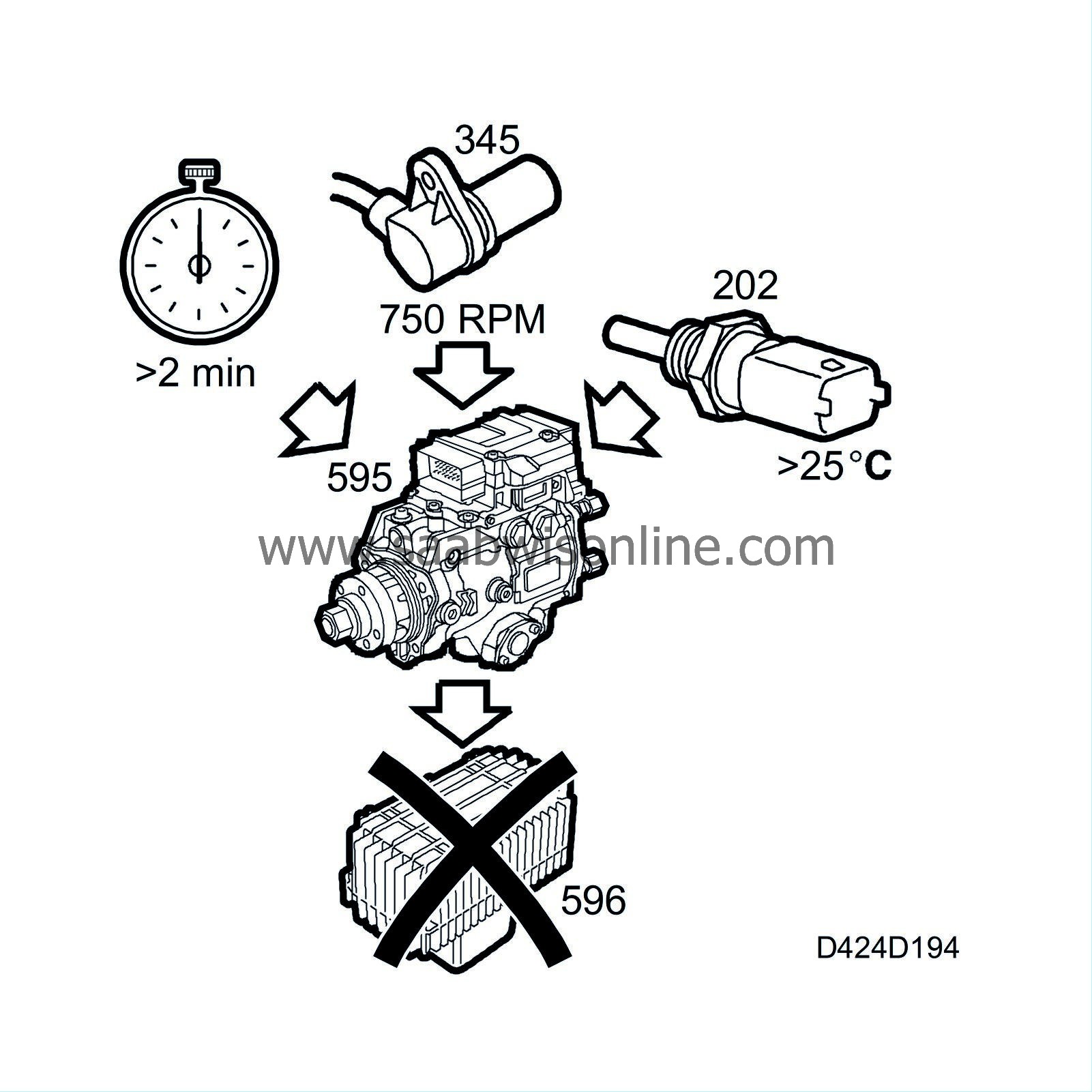
Once the engine has started, the control module supplies alternate pairs of glow plugs (1-3/2-4) with power.
Afterglow starts when the engine speed exceeds 750 rpm and is active as follows:
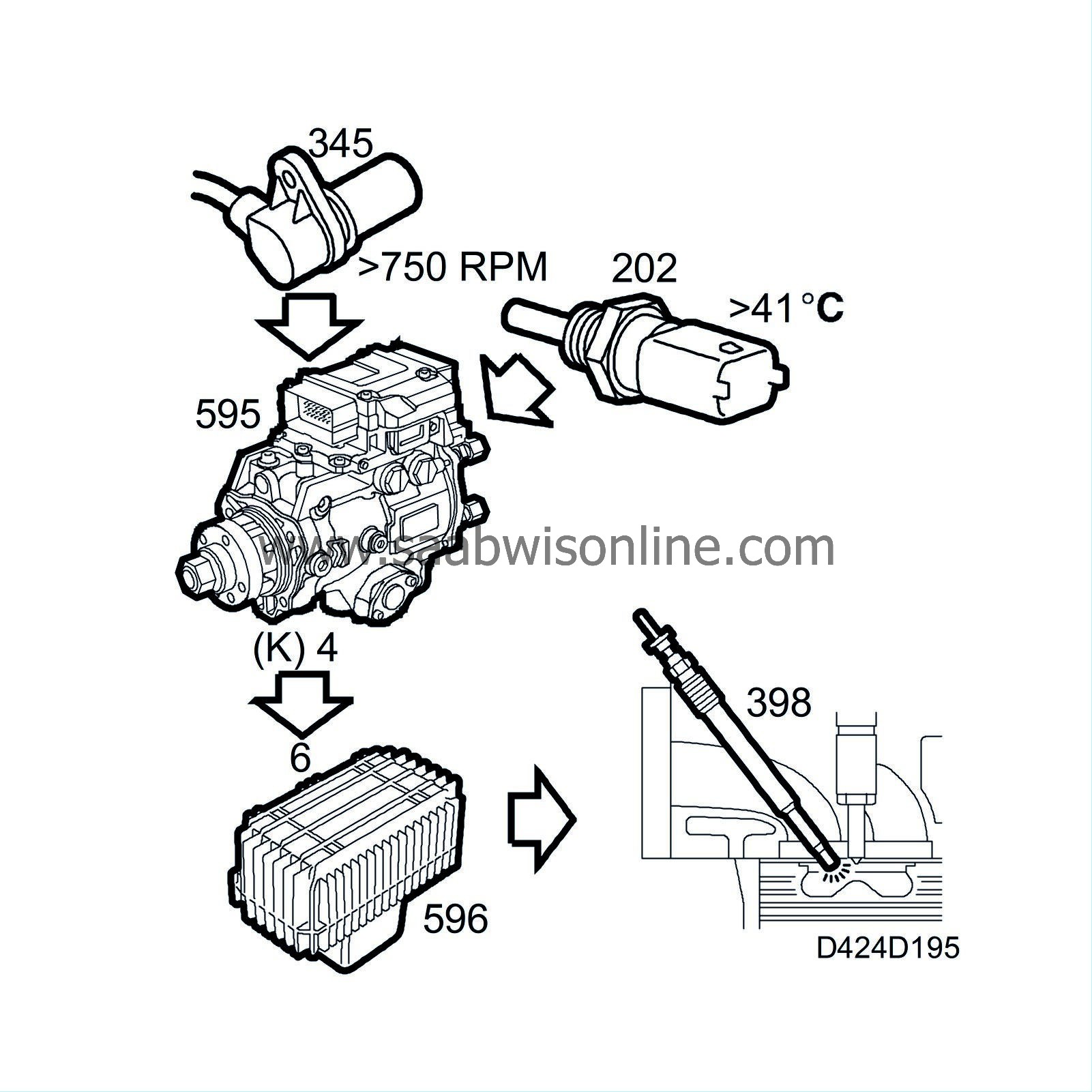
|
Coolant temperature °C (°F)
|
Duration
|
|
17 (62,6)
|
3 minutes
|
|
20 (68,0)
|
40 seconds
|
|
40 (104,0)
|
40 seconds
|
|
41 (105,8)
|
inactive
|
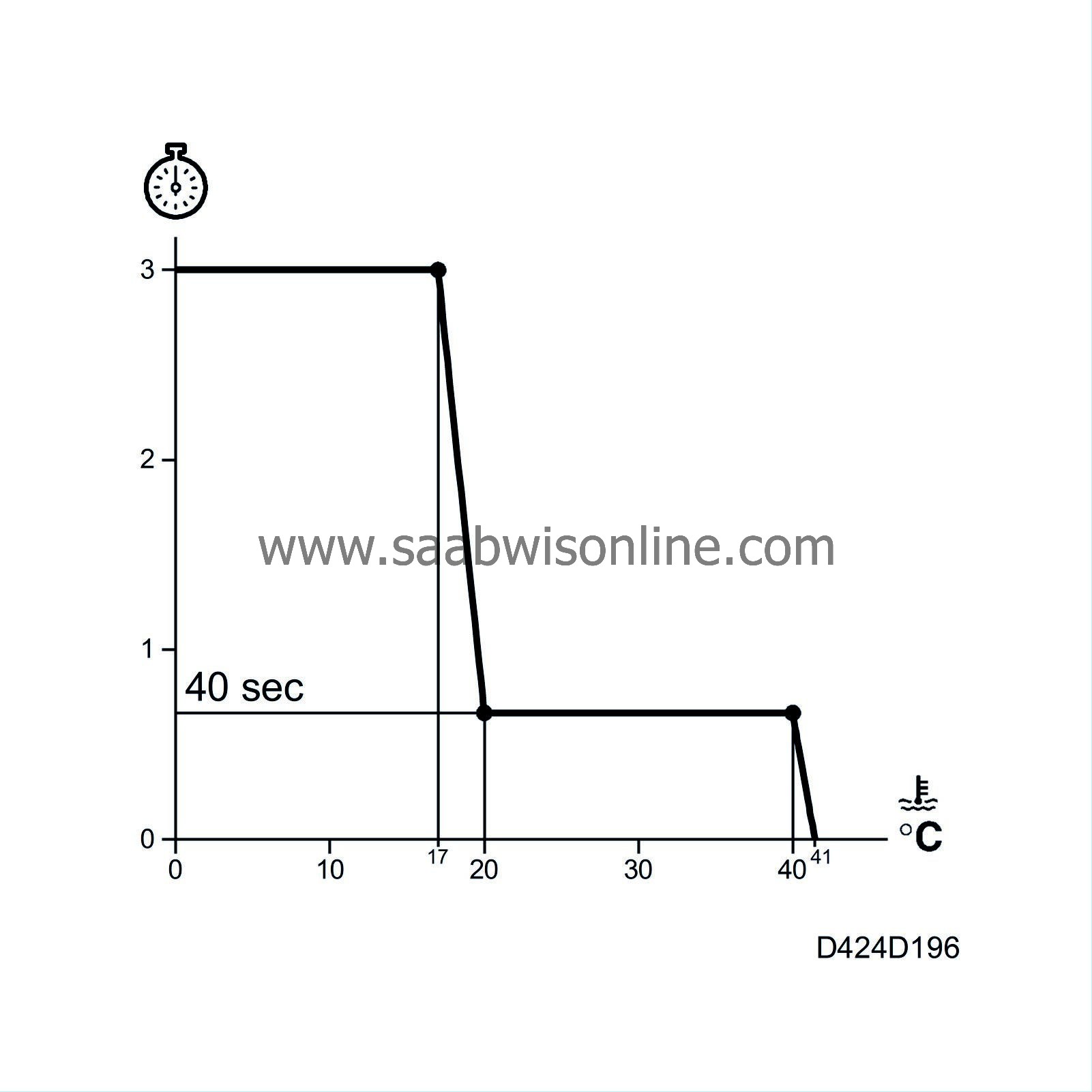
Afterglow is temporarily shut off if the engine speed exceeds 2500 rpm or if the injected fuel quantity corresponds to the value in the table.
|
Coolant temperature °C (°F)
|
Fuel quantity (mg/combustion)
|
|
40 (104.0)
|
35
|
|
30 (86.0)
|
40
|
|
10 (50.0)
|
50
|
|
-10 (14.0)
|
65
|
|
-20 (-4.0)
|
70
|
|
-30 (-22.0)
|
70
|
The period of afterglow continues even if it is interrupted by one of the above conditions.







